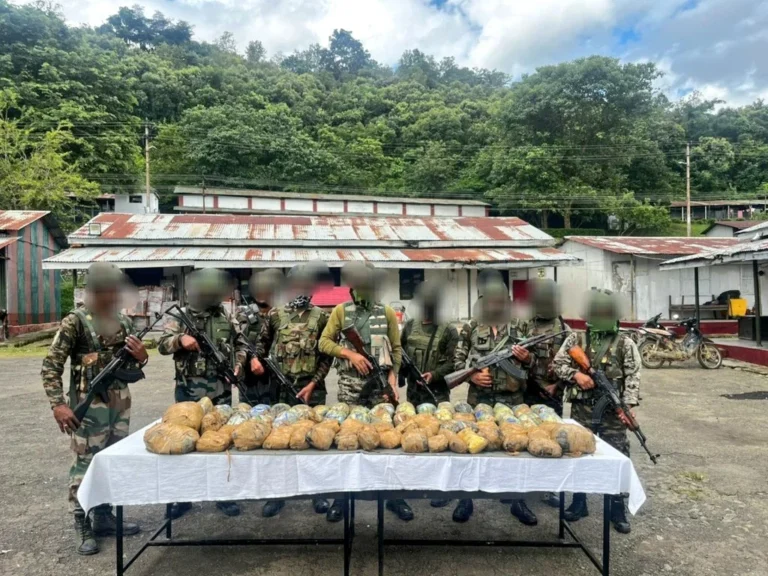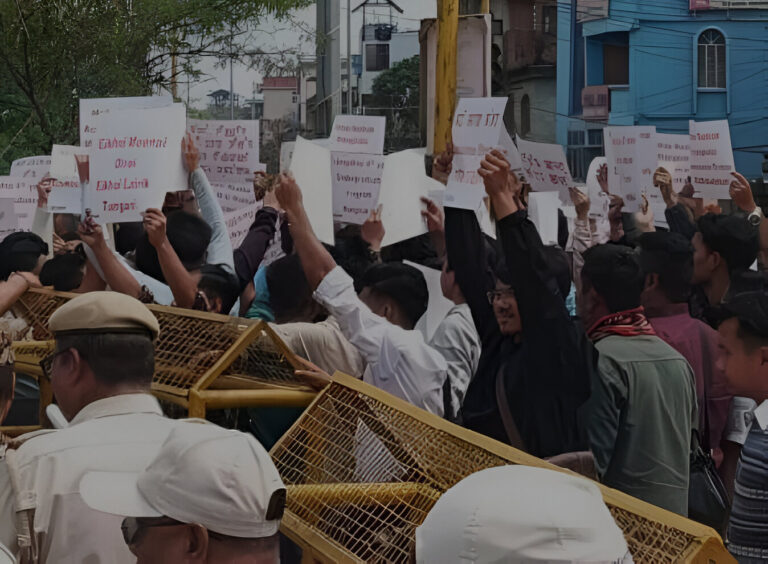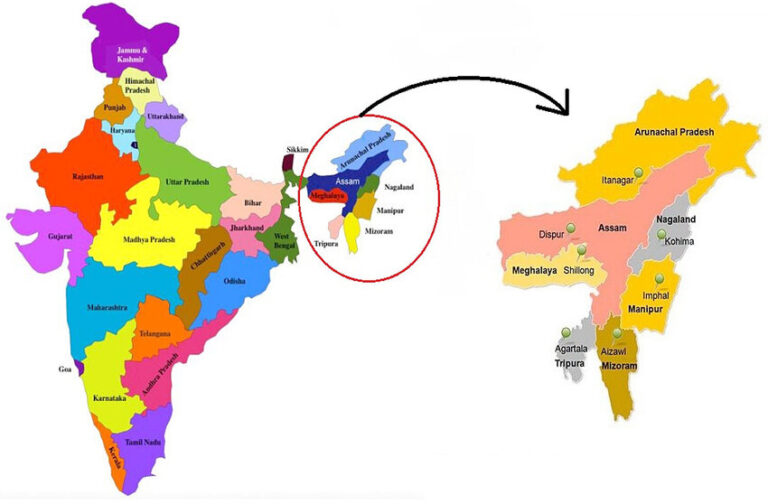Manipur: Two G-5 Organization Members Arrested for Extortion – A Deep Dive into Crime, Law Enforcement, and Community Impact
Introduction
Have you ever wondered how criminal networks manage to infiltrate communities and disrupt everyday life? In Manipur, the recent arrest of two members of the G-5 organization on charges of extortion has once again thrown the spotlight on the darker side of organized crime. This incident isn’t just a headline—it’s a wake-up call about the challenges that law enforcement faces while trying to protect citizens from illicit activities. In this article, we’re going to explore the details of the case, delve into the background of the G-5 organization, and discuss the broader implications for security and community trust in Manipur.
Buckle up as we take you on a journey through the intricate world of crime prevention, law enforcement strategies, and the impact of organized crime on local communities. Whether you’re a curious local resident, a student of criminal justice, or simply someone who cares about community safety, this deep dive will provide you with a comprehensive look at what’s happening on the ground in Manipur.
Understanding the Extortion Charges
Extortion is more than just a criminal act—it’s an insidious way for criminal groups to assert power over communities. Essentially, extortion involves obtaining money or other benefits through coercion, intimidation, or threats. In many cases, it’s not just about the money; it’s about control, fear, and the ability to operate with impunity.
Imagine someone coming to your doorstep every day, demanding money under the threat of harm if you refuse. That constant pressure can paralyze an entire community, creating an atmosphere of fear and mistrust. For many in Manipur, the arrest of these G-5 organization members serves as a reminder of how extortion can undermine the very fabric of society.
Who Are the G-5 Organization?
You might be asking, “What exactly is the G-5 organization, and what are they known for?” The G-5 organization is one of several groups operating in Manipur that have been linked to various criminal activities, including extortion, smuggling, and other forms of organized crime. While the specifics of their structure and hierarchy remain somewhat opaque, what is clear is that they have managed to build a network that wields considerable influence in certain areas.
Historically, groups like the G-5 organization have capitalized on local grievances, economic hardships, and even political instability to recruit members and extend their reach. Their operations often thrive in environments where law enforcement resources are stretched thin and community vigilance is low. In this context, the recent arrests are not just about catching two criminals—they’re part of a larger battle against a system that many feel has allowed such groups to flourish.
The Extortion Incident: What Really Happened?
Let’s break down the extortion incident. According to the reports, local law enforcement agencies received credible information regarding the extortion activities of these G-5 organization members. Over several weeks, intelligence was gathered from community tip-offs, undercover operations, and surveillance efforts. The culmination of these efforts led to the arrest of the two accused individuals.
Imagine the process as piecing together a complex puzzle. Each piece of evidence, every anonymous tip, and every surveillance clip contributed to the bigger picture—a picture that clearly showed extortion practices at work. The operation was swift and precise, demonstrating a well-coordinated effort by the authorities to strike at the heart of the criminal network.
It wasn’t just about seizing money or property; the operation also aimed to dismantle the aura of fear that these criminals had created. By making a public example of these extortionists, the law enforcement agencies hoped to deter others who might be considering similar illegal activities.
Law Enforcement’s Tactics: A Closer Look
Ever wonder how law enforcement agencies plan and execute such operations? The recent arrest in Manipur offers a fascinating glimpse into modern policing strategies in regions challenged by organized crime. Here’s how the authorities approached the situation:
- Intelligence Gathering: Before any physical action was taken, a robust intelligence network was activated. Informants, undercover agents, and community members played a crucial role in collecting evidence. This phase is akin to detectives gathering clues before making an arrest.
- Surveillance Operations: With enough data in hand, the authorities deployed surveillance teams to monitor the suspects’ movements. This allowed them to pinpoint exactly when and where the extortion activities were taking place. Think of it like setting a trap after knowing exactly when your target will appear.
- Coordinated Raids: Once the evidence was conclusive, law enforcement executed a coordinated raid. The timing and precision of the operation were key to ensuring that the suspects were caught off guard, minimizing the risk of a violent confrontation.
- Legal Procedures: Post-arrest, the suspects were processed according to legal protocols. The swift judicial action that followed sent a clear message: organized crime will not be tolerated, and those who engage in extortion will face serious consequences.
These tactics reflect a broader shift in how law enforcement is tackling organized crime in Manipur. Instead of reactive measures, there is a growing emphasis on proactive, intelligence-driven operations that aim to disrupt criminal networks before they can cause further harm.
Community Impact: Fear, Trust, and the Road to Recovery
Now, let’s talk about the impact on the community. Organized crime and extortion can tear apart the trust that holds communities together. For residents in areas affected by such activities, everyday life can feel like walking on a tightrope. The constant fear of becoming a target, the anxiety about personal safety, and the erosion of trust in local authorities are all significant challenges.
The arrest of the two G-5 organization members is a double-edged sword. On one hand, it brings relief and a sense of justice to the affected community. It shows that the law is not blind and that criminals will eventually be held accountable. On the other hand, it also serves as a stark reminder of the pervasive nature of organized crime.
Imagine living in a neighborhood where you always have to watch your back. That’s the reality for many people caught in the crosshairs of extortion. The emotional and psychological toll on families and local businesses can be profound. When criminal elements are allowed to operate with impunity, community cohesion suffers, and the overall quality of life declines.
Economic Implications: The Cost of Crime
Beyond the immediate fear and mistrust, extortion has serious economic implications. Local businesses, already grappling with various challenges, can suffer immensely when forced to pay protection money or deal with the unpredictable interference of criminal groups.
Think about it: every rupee paid in extortion is money that could have been invested back into the community—be it in the form of better services, improved infrastructure, or local development projects. Instead, those funds vanish into the pockets of criminals, further deepening economic disparities.
Moreover, when a criminal organization like the G-5 becomes entrenched in a region, it can deter outside investment and stunt local economic growth. Entrepreneurs might think twice before setting up shop in an area known for extortion and violence. The resulting economic stagnation can then feed back into the cycle of crime, creating a vicious loop that’s hard to break.
Political Ramifications: A Challenge to Governance
The recent arrests have also stirred up the political landscape in Manipur. Politicians and local leaders are increasingly being called upon to address the root causes of organized crime. Critics argue that a lack of robust governance and economic opportunities has allowed groups like the G-5 organization to thrive.
When criminal networks gain power, they often exploit gaps in governance and public services. This not only undermines the rule of law but also erodes public confidence in the government’s ability to protect its citizens. In the wake of these arrests, political leaders are facing tough questions: How can the state ensure that such networks are dismantled completely? What steps will be taken to prevent their re-emergence?
These questions are far from easy to answer. The problem of organized crime is deeply intertwined with issues of governance, economic disparity, and social alienation. The arrest of two criminals is a positive step, but it’s only a small part of a much larger battle.
The Role of Media: Informing and Influencing Public Perception
In today’s digital age, the media plays a crucial role in shaping public opinion on issues like extortion and organized crime. The coverage of the recent arrest in Manipur has been extensive, with news outlets highlighting both the success of the operation and the underlying issues that give rise to such criminal behavior.
Media reports can serve as a double-edged sword. On one hand, they help inform the public and keep authorities accountable. On the other, sensational reporting can sometimes exacerbate public fear and create an atmosphere of panic. It’s important that media outlets strike a balance—providing accurate, in-depth reporting while avoiding unnecessary sensationalism.
Responsible journalism can also help drive policy change. By shining a light on the conditions that allow criminal networks to flourish, the media can spur public debate and prompt policymakers to take meaningful action. In this sense, the media is not just a passive observer but an active participant in the ongoing struggle against organized crime.
Lessons Learned and the Path Forward
So, what can we take away from the recent arrest of the two G-5 organization members in Manipur? For one, it’s a clear signal that law enforcement is intensifying its efforts against organized crime. The meticulous planning, coordinated raids, and swift judicial action demonstrate that authorities are not willing to let extortion run rampant.
However, the case also highlights the need for a more comprehensive strategy. Arrests and raids, while necessary, are only part of the solution. To truly combat extortion and organized crime, it’s crucial to address the root causes that give rise to these activities. This means investing in local communities, creating economic opportunities, and strengthening governance at all levels.
Imagine trying to stop a leak in a dam by patching a few holes without addressing the underlying structural issues. That’s essentially what a purely reactive approach to organized crime looks like. Instead, a proactive strategy—one that combines law enforcement with community development and economic revitalization—offers a more sustainable path forward.
Community Engagement and Empowerment
One of the most promising strategies in the fight against organized crime is community engagement. When communities are empowered and involved in the decision-making process, they become active participants in their own protection. Local neighborhood watches, community policing initiatives, and civic education programs can all play a role in reducing the influence of criminal networks.
Imagine a community where everyone is on the lookout for one another—a place where trust and cooperation replace fear and isolation. That’s the kind of environment that can undermine the power of extortionists. When people come together, they not only create a safer community but also send a powerful message to criminals: their days of exploiting the vulnerable are numbered.
Technological Innovations in Crime Prevention
In our modern age, technology has become a critical ally in the battle against crime. Surveillance cameras, data analytics, and digital monitoring tools can provide law enforcement with real-time insights into criminal activities. For instance, by analyzing patterns and tracking transactions, authorities can identify suspicious activities that may be linked to extortion or other forms of organized crime.
Imagine having a smart system that alerts you the moment something unusual happens in your neighborhood. That’s the promise of technology in crime prevention. By leveraging these tools, law enforcement agencies in Manipur can not only respond to incidents more quickly but also prevent them from occurring in the first place. This technological edge is essential in a world where criminal networks are constantly evolving and finding new ways to operate.
Collaboration Between Agencies
No single entity can tackle the challenge of organized crime alone. The recent success in arresting the G-5 organization members is a testament to the power of collaboration. Local police, intelligence units, and even community leaders must work together to create a united front against extortion and other criminal activities.
Think of it like a sports team where every player has a specific role. When everyone works in harmony, the team can overcome even the toughest opponents. In the context of Manipur, stronger inter-agency collaboration can lead to more efficient operations, better intelligence sharing, and ultimately, a more secure community.
Preventive Measures and Policy Reforms
The arrest of these two individuals should also serve as a catalyst for policy reforms. It’s time for the government to re-examine existing laws and regulations surrounding extortion and organized crime. This could include stricter penalties for offenders, better protection for witnesses, and enhanced support for victims of extortion.
Preventive measures might also involve economic reforms aimed at reducing the vulnerabilities that allow criminal networks to take root. By creating job opportunities, investing in education, and fostering a more inclusive economic environment, the state can tackle the problem at its source. Imagine a future where every citizen has access to the resources they need to thrive—this is the vision that should guide policy reforms.
Challenges Ahead
Of course, challenges remain. Organized crime is a persistent problem, and criminals are adept at adapting to new situations. While the arrest of the two G-5 organization members is a victory, it’s unlikely to mark the end of extortion activities in Manipur. Criminal networks are like weeds in a garden—they may be removed, but if the conditions remain favorable, they’ll keep coming back.
The authorities must remain vigilant and continue to invest in both short-term operations and long-term strategies. It’s a balancing act, requiring careful consideration of both immediate needs and future risks. In this ongoing battle, every step forward is hard-earned, and setbacks are inevitable. Yet, with a sustained, collaborative effort, progress is possible.
Conclusion
The arrest of two G-5 organization members for extortion in Manipur is a significant milestone in the region’s ongoing struggle against organized crime. It demonstrates that when law enforcement, community engagement, and technological innovation come together, positive change is within reach. However, this incident also highlights the deep-rooted challenges that continue to fuel criminal activities—from economic disparities to governance gaps.
As we reflect on this event, it’s clear that a multifaceted approach is necessary to secure a safer future for Manipur. Arrests and raids are critical, but so is the need to empower communities, leverage technology, and implement meaningful policy reforms. Only by addressing the issue on all fronts can we hope to break the cycle of extortion and build a community where trust and prosperity prevail.
In the end, the battle against organized crime is not just a law enforcement issue—it’s a societal challenge that requires the collective effort of government, citizens, and all stakeholders involved. By working together, we can ensure that justice prevails and that our communities remain resilient in the face of adversity.
Frequently Asked Questions (FAQs)
- What led to the arrest of the two G-5 organization members in Manipur?
Extensive intelligence gathering and coordinated law enforcement operations revealed that the two individuals were involved in extortion activities, leading to their arrest in a well-planned raid. - How does extortion impact local communities in Manipur?
Extortion creates an atmosphere of fear and mistrust, drains financial resources that could support local development, and undermines the sense of security and community cohesion. - What strategies are being used to combat organized crime like that of the G-5 organization?
Authorities are employing a mix of intelligence-led operations, advanced surveillance, inter-agency collaboration, and community engagement initiatives to disrupt and dismantle criminal networks. - How can technology help prevent extortion and other criminal activities in the region?
Technological tools such as data analytics, surveillance systems, and digital monitoring can provide real-time insights into criminal behavior, enabling authorities to act proactively and prevent crime before it escalates. - What long-term measures can be implemented to reduce the influence of criminal networks in Manipur?
Long-term solutions include policy reforms, economic development programs, community empowerment initiatives, and improved governance to address the underlying causes of criminal activity and ensure a safer, more prosperous future.




